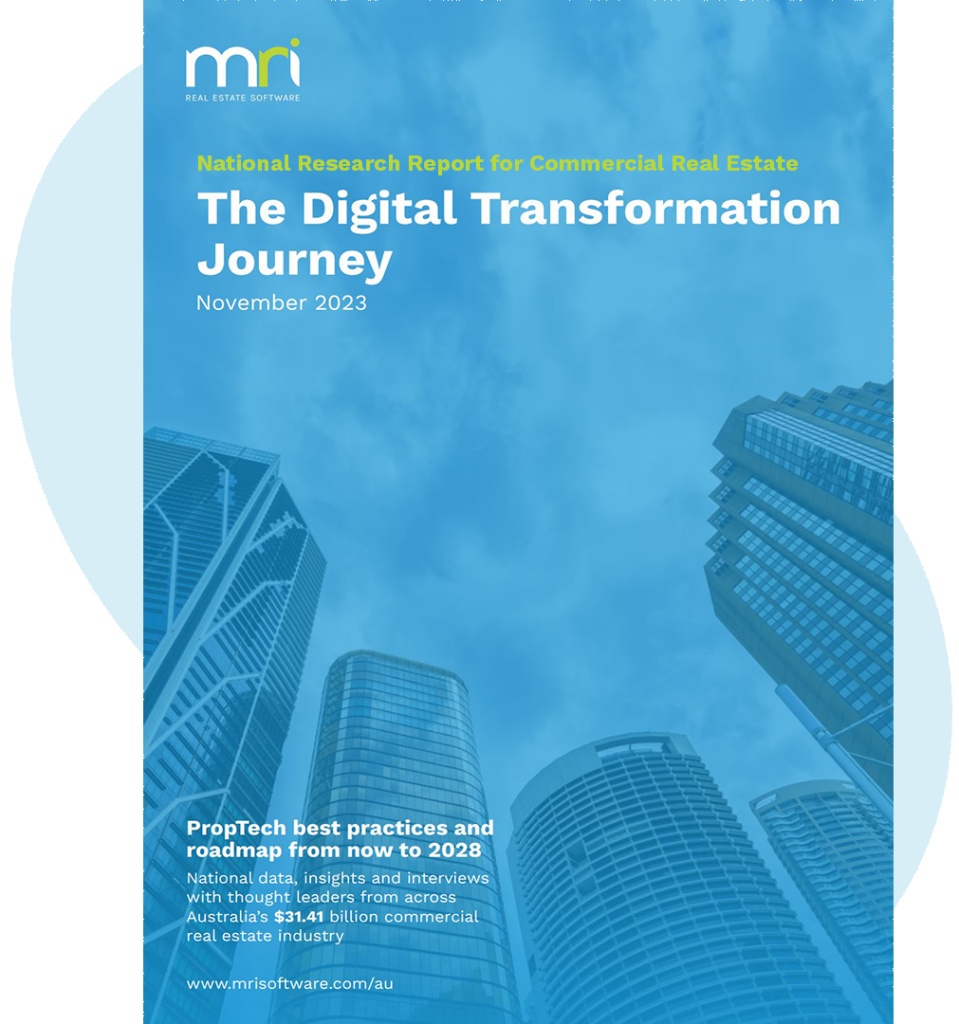Voices of Digital Transformation: Expert Insights Series
Nikki Steadman, Senior Director, Professional Services + Solutions Asia Pacific, MRI Software
Our expert insights series is based on outreach conducted by MRI Software for its national research report for the commercial property sector – Voices of Digital Transformation Report.
About Loci Solutions
Nikki Steadman leads the APAC MRI @Work Professional Services and Support team, which serves some of Australia’s largest and most complex commercial real estate portfolios. She was formerly CEO of Loci Solutions, which provides technology consulting and outsourced managed services to the commercial, industrial, and retail property markets across Asia Pacific. For decades, Loci Solutions has been MRI’s preferred regional implementation partner, and the two businesses formerly merged in 2023.
Nikki spoke to us about factors that can make or break a proptech implementation, and how effective project management and change management can shape its ongoing success.
The Digital Transformation Journey
PropTech best practices for commercial real estate from now to 2028.

Navigating business challenges
“Before implementing digital innovation or proptech solutions, the challenges our clients and prospects commonly encounter often revolve around being reluctant to embrace cultural change,” Nikki said. “This resistance can come from both staff and management, and it presents a significant obstacle in the journey.”
Employees may be hesitant to deviate from familiar practices, while leadership might be unwilling to disrupt established workflows. These things can often create a culture of inertia that stand in the way of a smooth transition to new technological solutions.
– Nikki Steadman, CEO, Loci Solutions.
“It’s also not uncommon for software to bear the brunt of the blame for potential issues,” Nikki said. “In many cases, the existing processes are deeply ingrained within the organisation, and any disruptions are viewed with skepticism, contributing to a perception that the software is at fault.”
This overshadows the fact that it’s often the processes themselves that require adjustment, she pointed out.
“A holistic transformation that involves both process reevaluation and technological integration is critical in effectively navigating these significant challenges,” Nikki believes.
Implementing new solutions
In Nikki’s opinion, businesses fall into three major categories when it comes to identifying and selecting new technology solutions.
First, there’s the old methodology where companies will line up as many product demonstrations for as many different solutions as they can find in the market and just get demo after demo. They try to determine from a sales demonstration whether the solution is actually a fit for business. And that’s never ideal.
– Nikki Steadman, Loci Solutions.
The second approach is cost-centric, where businesses focus primarily on negotiating pricing without conducting thorough scoping analysis. Nikki cautioned against this approach, explaining that it can lead to distorted outcomes.
“Demonstrations get run but pricing is requested before there’s any real opportunity for a vendor to gain access, develop an understanding of the business and really drill into what it is that the customer wants,” she said. “As we say at MRI, ‘Don’t rush the blueprinting phase!’ The devil is in the detail and it’s really important to understand that detail.”
“Thirdly, and it’s a more prevalent approach nowadays, is that businesses enlist specialised consultants to assist them throughout the process. The consultants delve more deeply into the requirements, thoroughly document current and desired future states, and help cut through any unnecessary ‘noise’.”
“The key is to ensure that when evaluating multiple systems, you are comparing apples with apples and not getting sidetracked by irrelevant features or non-essential requirements,” Nikki said. “This approach is based on a much clearer understanding of the problems at hand and will deliver the most effective results in the long run.”
“When it comes to integrating the new with the old, there’s a real expectation for everything to be touchless and seamless and bouncing around via real time APIs, and sometimes that’s not the best way to handle an integration,” Nikki said. “It really depends on what you’re trying to achieve, how critical that data is, what it’s used for and where it needs to end up. This comes down to assessing the integration on its own merits and understanding what’s required, and then ensuring that you’re using the correct methodology.”
Managing change and measuring success
“What we’ve increasingly observed is that our clients are embracing formalised change management practices more actively,” Nikki said. “This is fantastic because collaboration, communication, knowledge sharing, and team involvement are all crucial for us.”
We follow the ADKAR model as part of our change management approach. It encompasses five distinct phases, starting with ‘Awareness’ to ensure everyone is well informed about the changes.
– Nikki Steadman, Loci Solutions.
“The next phase is ‘Desire’, which focuses on fostering enthusiasm among key stakeholders and users. ‘Knowledge’ is about ensuring proper training and understanding. ‘Ability’ is dedicated to guaranteeing that everyone has the necessary skills and resources for successful implementation. Lastly, ‘Reinforcement’ involves reinvesting in training to support the changes.”
Lessons and best practices
Nikki suggests that executive sponsorship, a firm commitment to the project’s scope, and unwavering adherence to good governance principles are the three critical factors for ensuring successful implementation.
The most critical success factor in a digital implementation, and one that is often overlooked, is making sure that there’s proper executive engagement and sponsorship. It requires full support from a senior leadership team that is seen to be fully invested in the project.
– Nikki Steadman, Loci Solutions.
“Secondly, scope creep is common during implementation, and while some surprise issues may emerge, it’s vital to work out whether they’re essential for the initial go-live phase, or can be addressed in subsequent stages,” Nikki added. “Clients often benefit from the process of figuring out what is vital for the immediate launch because it allows them to streamline the process and consider additional features for future enhancements as needed.”
“And finally there’s good project governance and management, which is often scrimped on, unfortunately,” she concluded. “Things are changing and the market is definitely maturing, but getting senior leadership involved in steering committee sessions, prioritising milestones, formally overseeing the scope and budget, and ensuring comprehensive governance and documentation are in place all significantly contribute to a successful implementation.”
Proptech trends to watch
“There’s increasing buzz about the metaverse and the latest trends in virtual reality and its practical applications, such as virtual property showings and immersive 3D tours, which offer undeniable benefits,” Nikki said.
From my perspective, what continues to drive innovation and transformation is the growing focus on AI and the increasing adoption of big data analytics.
– Nikki Steadman, Loci Solutions.
“The capacity to gather and analyse vast amounts of data swiftly will be the key to providing valuable insights and statistics for informed decision-making in the industry.”
Download a copy of the Voices of Digital Tranformation Report here and learn more about how Australian real estate businesses are embracing proptech best practices to help achieve strategic goals.
Master Digital Transformation in Real Estate – Learn PropTech Best Practices Now!
Like most industries, the commercial real estate sector is going through a rapid digital transformation. To better understand what specific challenges technology is now tasked with solving, we conducted an in-depth survey with over 100 leading commer…


